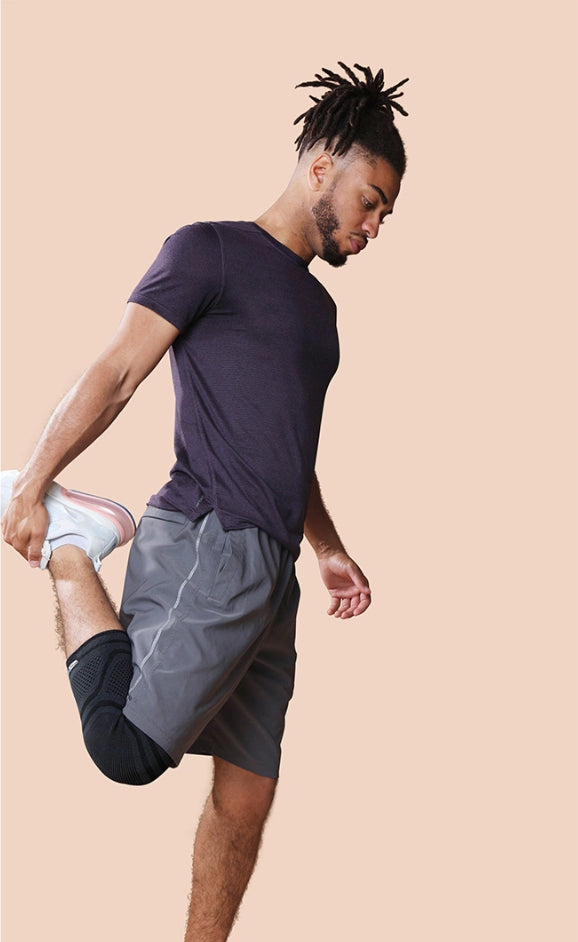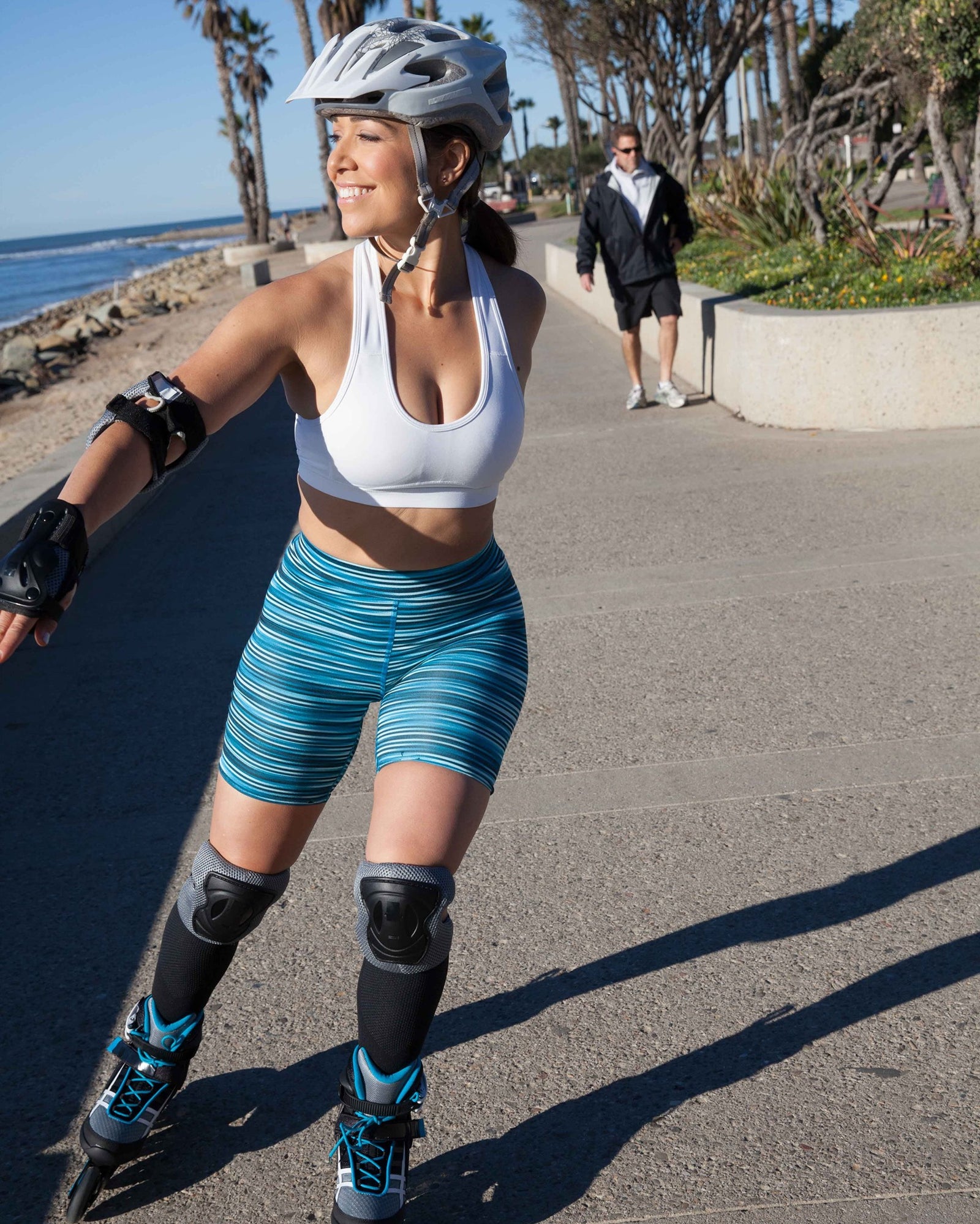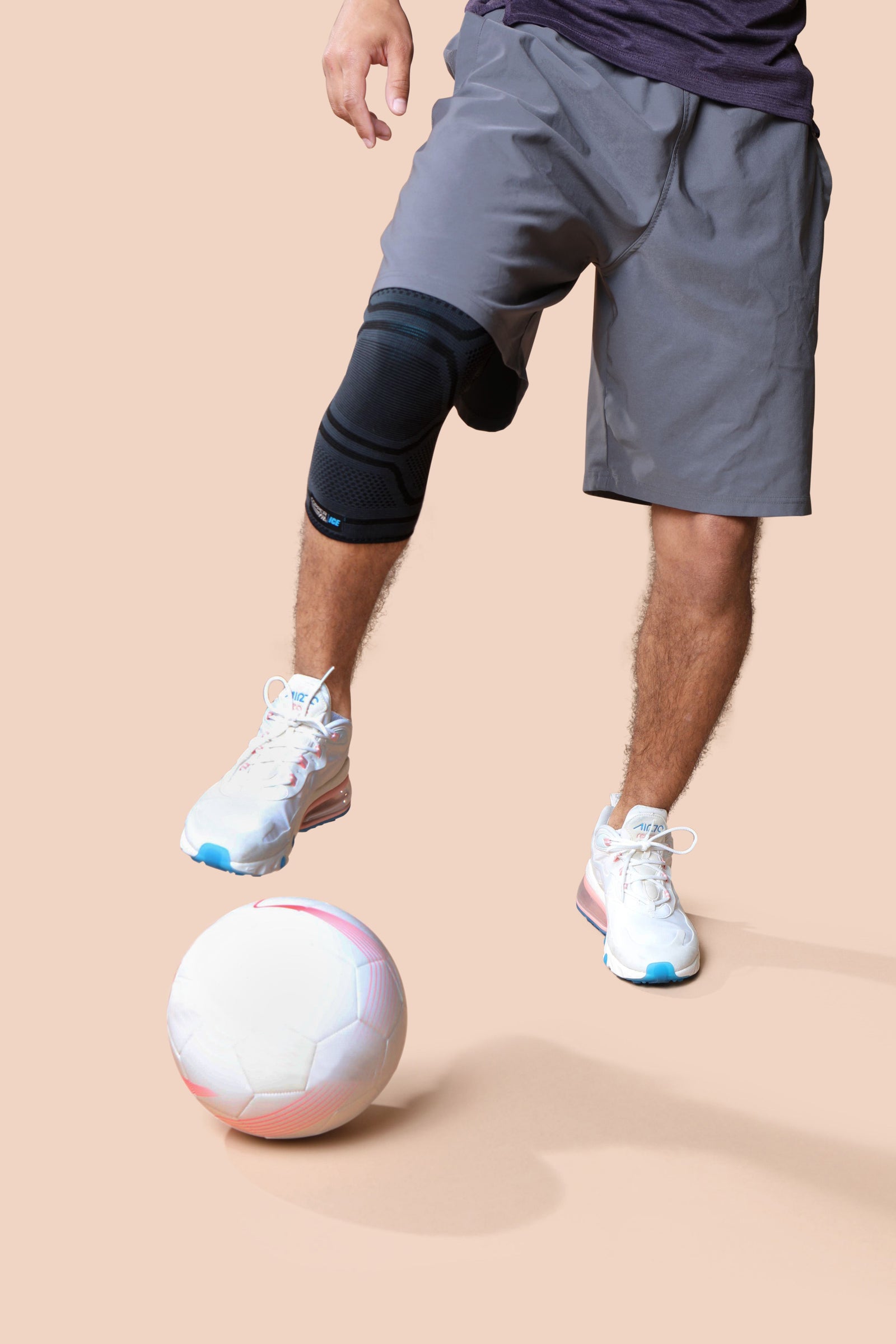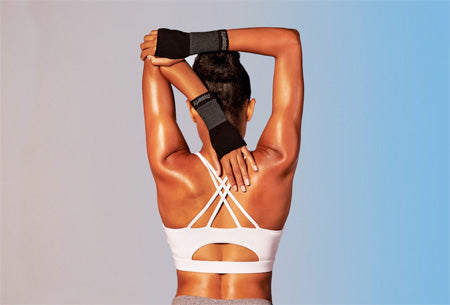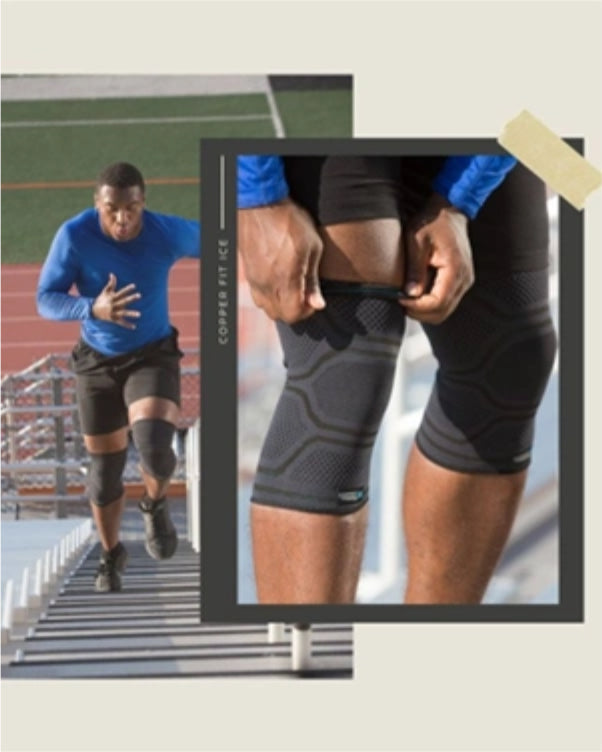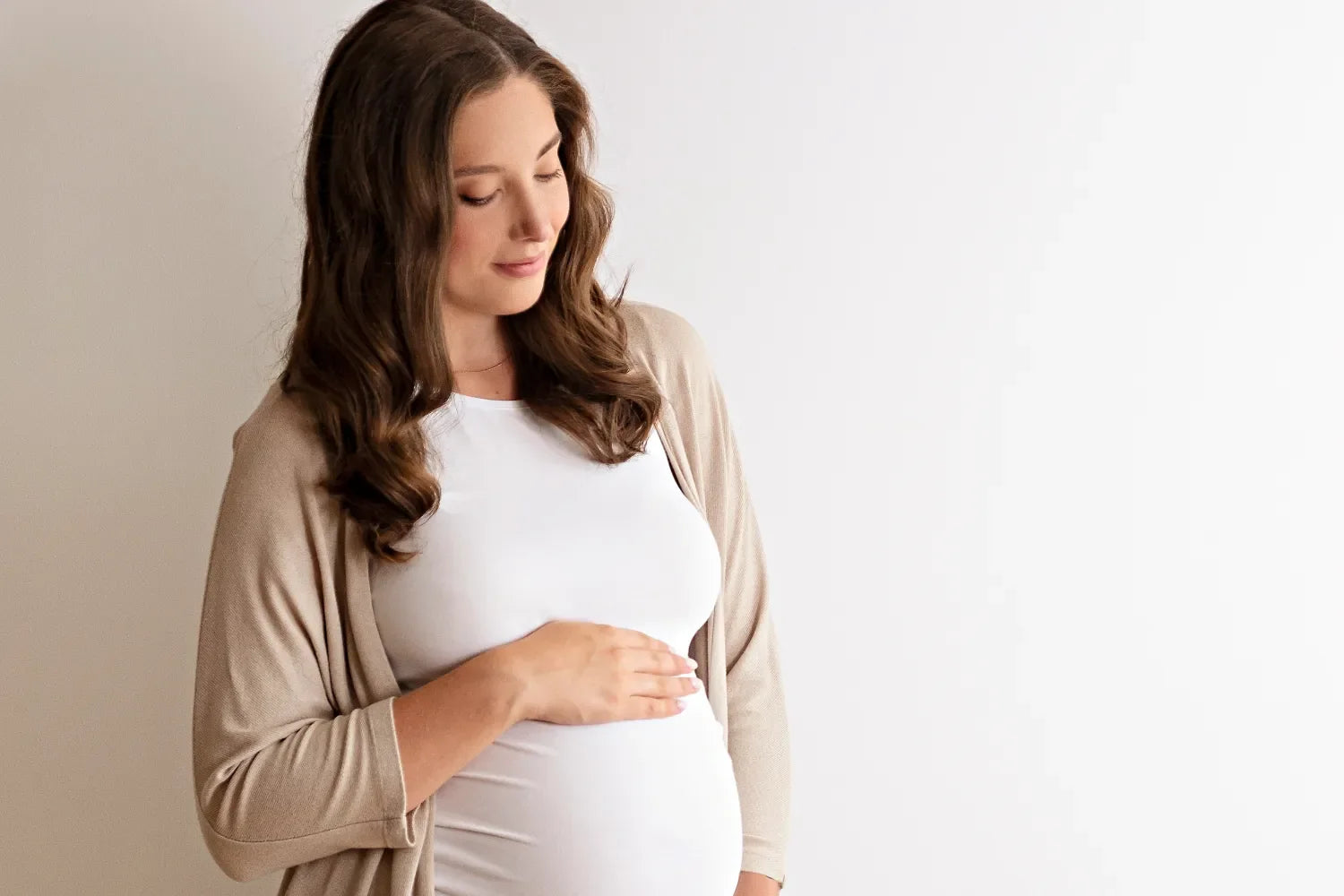
Key Takeaways
- Hydration and movement go a long way. Staying active and drinking plenty of water helps support healthy circulation and ease tension in the lower legs.
- Gentle compression and elevation can help. Light compression gear and putting your feet up regularly can help soothe discomfort and support your body’s natural recovery.
- Supportive footwear and breathable clothing matter. Choose flexible, comfortable options that adjust with your body and reduce pressure throughout the day.
Navigating discomfort during pregnancy is a common experience, and one that can be incredibly difficult. Your body is experiencing a whole lot of changes, and if you’re struggling with some of the physical effects of these shifts, you aren’t alone.
Swollen feet are one of the most common and frustrating changes that pregnant people experience, especially in the second and third trimesters.
Learning how to manage swelling and find relief can help you feel more supported from morning to night. You deserve to be as comfortable and supported as possible while growing a tiny human, so let’s dive right into ways to manage swollen feet during pregnancy.
Why Does Swollen Feet Happen During Pregnancy?
Swelling, also called edema, is a normal part of pregnancy for many people. As your body adjusts to support a growing baby, it tends to hold more water, and your blood volume increasesby up to 50%.
This, combined with hormonal shifts and pressure from your uterus on the veins in your pelvis, can make it harder for blood to flow back up from your legs. The result: fluid tends to pool in your lower extremities, especially around your feet and ankles.
Swelling may be more noticeable later in the day, after long periods of standing or sitting, or in hot weather. While it can feel uncomfortable, it usually isn’t dangerous. Still, it’s always a good idea to let your healthcare provider know about any sudden or severe changes.
Tips To Help Manage and Prevent Swelling
Taking proactive steps early in your pregnancy can make a big difference in how you feel later on.
Supporting circulation and reducing fluid retention starts with your daily habits:
Incorporate Gentle Movements
Gentle movement throughout the day helps promote healthy blood flow and encourages your body to regulate fluid balance. Even short walks or light stretching routines can make a noticeable difference.
Avoid Sitting or Standing Too Long
If you’re on your feet for long periods, try to take breaks to sit and elevate your legs. If you’re sitting at a desk or on the couch for extended periods, make it a point to stand, stretch, or walk around every hour.
Stay Hydrated
It may seem counterintuitive, but drinking plenty of water actually helps reduce water retention. When your body is well-hydrated, it’s less likely to hold onto excess fluid.
Get Key Nutrients
Eating a balanced diet that’s rich in potassium and low in sodium can help regulate fluid levels. Look for foods like bananas, avocados, spinach, and sweet potatoes to help support your body’s natural balance.
Immerse Your Feet in Water
Water immersion can be a surprisingly effective way to manage swelling during pregnancy. Standing or walking in a pool provides gentle resistance and light pressure that can help promote circulation in the legs and feet. The hydrostatic pressure of the water supports your body and can encourage fluid movement without placing extra strain on your joints.
If a pool isn’t accessible, even soaking your feet in cool water for 10 to 15 minutes can help relieve the sensation of heaviness and ease surface tension. Just be sure the water isn’t too cold, and follow up with some gentle foot flexes or a light massage if it feels good to you.
Elevate and Rest
When swelling starts to kick in, elevation and rest can be powerful tools. Raising your feet above heart level for a few minutes at a time encourages fluid to move out of the lower legs and can help reduce that heavy, puffy feeling.
Try Compression Gear
Compression gear designed for comfort and support during pregnancy can also be incredibly helpful. Gentle, graduated compression helps support healthy blood flow, which may soothe tension and ease swelling at the end of a long day.
When choosing compression products, look for options made with seamless, breathable materials that won’t chafe or dig in. These features help you stay cool and comfortable while still receiving the benefits of added support.
Wear Comfortable Footwear and Supportive Clothing
The right gear can make a noticeable difference in how your body feels. As your feet swell, tight shoes or restrictive socks can make discomfort worse. Supportive, roomy shoes that accommodate changes in foot size are a must.
Footwear should be breathable, flexible, and easy to slip on and off. Skip high heels or anything that places extra pressure on the balls of your feet. Instead, look for options with arch support and cushioning that adapts as you move.
Clothing matters too. Choose non-restrictive, moisture-wicking materials that support circulation and keep you cool. Pregnancy can increase your body temperature, so staying dry and comfortable can help ease tension and reduce the sensation of heaviness in your legs.
Simple Exercises and Stretches You Can Do Daily
Movement is one of the most effective ways to reduce swelling during pregnancy. It doesn’t have to be intense or time-consuming, just consistent.
Ankle circles and foot flexes are easy to do while sitting and help activate the muscles that assist with circulation. Point and flex your toes or make slow circles with your ankles to encourage fluid movement.
Calf raises can be done anywhere and strengthen muscles that support blood flow back to the heart. Stand on your tiptoes for a few seconds, then slowly lower your heels. Repeat several times a day.
Short walks, especially in the morning or evening, help your entire body stay active and energized without putting too much strain on your joints. Comfortable walking shoes and light support wear can enhance your comfort during movement.
Stretching the lower body can also help ease feelings of tightness. Gentle yoga poses like seated forward folds or modified downward dog (with support) can relieve some of the tension that builds up in your legs and hips.
If you have access to a massage tool or roller, gently massaging your calves, ankles, and feet may help promote relaxation and support healthy circulation. Just be sure to check with your provider before adding new tools or routines to your regimen.
When To Talk to Your Doctor
Most swelling is completely normal during pregnancy, but it’s important to stay alert to changes that might signal something more serious.
You should always contact your healthcare provider if you notice:
- Sudden or severe swelling, especially in just one leg
- Swelling accompanied by headaches, blurred vision, or abdominal pain
- Swelling that comes on very quickly and doesn’t go down with rest
Your provider can help determine if what you’re experiencing is part of normal pregnancy changes or if it needs additional attention. Don’t hesitate to bring up concerns. You deserve to feel confident and supported every step of the way.
FAQ
What helps reduce swollen feet during pregnancy the fastest?
Staying hydrated, elevating your legs, and using light compression gear are some of the most effective ways to reduce swelling. Gentle movement, like walking or stretching, also helps encourage circulation.
Are swollen feet during pregnancy normal?
Yes. Swelling is a common experience during pregnancy, especially in the second and third trimesters. It’s caused by increased fluid retention and changes in circulation. Always talk to your healthcare provider if you notice sudden or severe changes.
Can I still exercise with swollen feet while pregnant?
Definitely. Light, low-impact activity like walking or prenatal yoga can help reduce swelling and keep you feeling energized. Just be sure to wear supportive shoes and listen to your body as you move.
The Bottom Line
Here at Copper Fit, we understand how important it is to feel comfortable, supported, and capable throughout every phase of life, including pregnancy. We know how frustrating it can be to deal with sore, swollen feet when all you want to do is get through your day feeling strong and steady.
That’s why we believe in tools and routines that help you stay active, recover faster, and feel more at ease in your body. Swelling is a normal part of the process, but that doesn’t mean you have to tough it out without support.
Whether it’s gentle compression, targeted recovery routines, or simply giving your body the break it needs, you have options. You deserve comfort, relief, and the freedom to move through your day with confidence.
Sources:
Physiological changes in pregnancy | PMC
Fluid retention (oedema) | Better Health Channel

